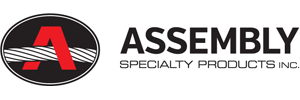OSHA Guide – Cranes and Derricks in Construction
MENU
- Introduction
- Employer Responsibilities
- Section 1400 – Scope
- Section 1401 – Definitions
- Section 1402 – Ground Conditions
- Sections 1403-1406 – Assembly and Disassembly
- Sections 1407-1411 – Power Lines
- Section 1412 – Inspections (with Section 1435(f)-Tower Crane Inspections) and Section 1436(p)-Derricks Inspections)
- Section 1413 – Wire Rope Inspection
- Section 1414 – Wire Rope – Selection and Installation Criteria
- Sections 1415 Safety Devices & 1416 Operational Aids
- Section 1417 – Operation
- Section 1418 – Authority to Stop Operation
- Section 1419-1422 – Signals
- Section 1423 – Fall Protection
- Section 1424 – Work Area Control
- Section 1425 – Keeping Clear of the Load
- Section 1426 – Free Fall and Controlled Load Lowering
- Section 1427 – Operator Qualification and Certification
- Section 1428 – Signal Person Qualifications
- Section 1429 – Qualifications of Maintenance & Repair Employees
- Section 1430 – Training
- Section 1431 – Hoisting Personnel
- Section 1432 – Multiple-Crane/Derrick Lifts
- Section 1433 – Design, Construction and Testing
- Section 1434 – Equipment Modifications
- Section 1435 – Tower Cranes
- Section 1436 – Derricks
- Section 1437 – Floating Cranes/Derricks and Land Cranes/Derricks on Barges
- Section 1438 – Overhead & Gantry Cranes
- Section 1439 – Dedicated Pile Drivers
- Section 1440 – Sideboom Cranes
- Section 1441 – Equipment with a Rated Hoisting/Lifting Capacity of 2,000 Pounds or Less
- Directory of States with Approved Occupational Safety and Health Programs
- Workers’ Rights
- OSHA Assistance, Services and Programs
- OSHA Regional Offices
- NIOSH Health Hazard Evaluation Program
Section 1441 – Equipment with a Rated Hoisting/Lifting Capacity of 2,000 Pounds or Less
Although equipment with a capacity of 2,000 pounds or less does not require all of the precautions required for heavier equipment, its operation still presents significant hazards that can cause death or injury. For example, operation near energized power lines requires the same precautions as heavier equipment because the potential for electrocution is the same.
This section lists the provisions of the standard that apply to equipment with a capacity of 2,000 pounds or less and those for which modified requirements apply. The most significant differences are:
- The requirement for operator qualification/ certification in section 1427 does not apply. Instead, the employer must train each operator on the safe operation of the equipment before the operator may operate the equipment
- The requirements for shift, monthly, and annual inspections in section 1412 do not apply. However, post-assembly inspections and the wire rope inspections required by section 1413 must be conducted
- More limited assembly/disassembly requirements apply
- The safety devices and operational aids listed in sections 1415-1416 need not be used, except for two-block protection. However, safety devices and operational aids that are part of the original equipment must be maintained in accord with manufacturer procedures
- Signal persons must be adequately trained but need not meet the qualification requirements of section 1428
- Equipment covered by this section must not be used to hoist personnel

